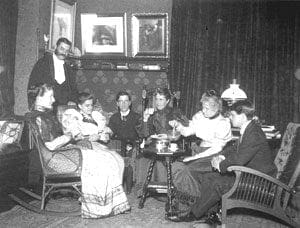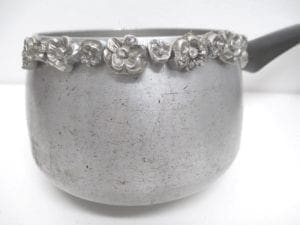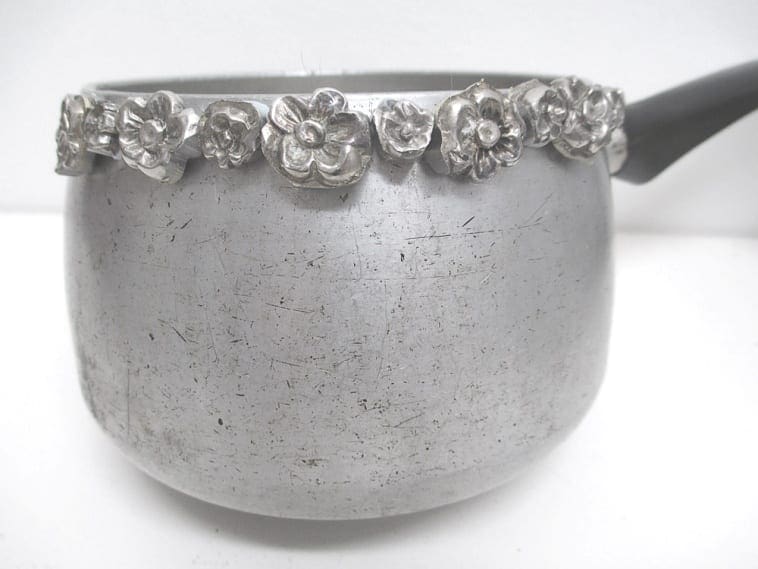Blog 8, April 10th, 2017 Questions
After my first conversation with my mentor there was a list of questions that sent me back to reading research. In my last blog I mentioned that I was interested in trying to form some kind of hybrid using pieces of silver plate and aluminium kitchenware. I had looked at the history of silver plate, but this time Ben’s questions led me into the social and cultural life during the Georgian and early Victorian periods. He asked me to examine the perceived hierarchy of the taste of the aristocracy over the functional domestic aluminium. There seems to have been an awareness that there were opportunities to rise above the poor rural existence that was disappearing anyway with the advent of industrialisation. Part of the effort towards self-improvement was the adoption of upper-class manners and customs. The genteel ceremony of taking tea was one such custom, and the production of silver-plated tea sets increasingly made the participation possible.

The Social gathering at the Schuyler-Merritt home, 1893
http://www.stamfordhistory.org/cc_gls.htm
The availability of cheaper tea, imported from Sri Lanka after 1830 and the increasing influence of the temperance movement made tea drinking a necessary luxury for the working classes.
In looking at the cultural attitude of many of the middle and perhaps even lower middle classes at that time, I think I’m replicating this desire for social advancement, but conversely subverting the exclusive, ‘special occassion’ nature of the silver plate by making it part of the everyday kitchen ware.

Trial of silver plate and aluminium
Home comforts
While all and sundry mingled at public entertainments (theatre and pleasure gardens containing various entertainments were very popular), only a small minority lived in any sort of luxury. Nonetheless, the consumer revolution transformed not just the homes of the rich, but also of the middling and even some of the lower social strata. What had been drab, sparsely furnished spaces were increasingly stuffed full of a cornucopia of cheaply manufactured household items known as ‘decencies’. Thus the tradesman, parson, or attorney might live in moderate comfort, copying the manners of the rich as far as they could. The great value placed on politeness helped smooth over social barriers between gentry and the aspiring middle classes.
http://www.english-heritage.org.uk/learn/story-of-england/georgians/daily-life/


